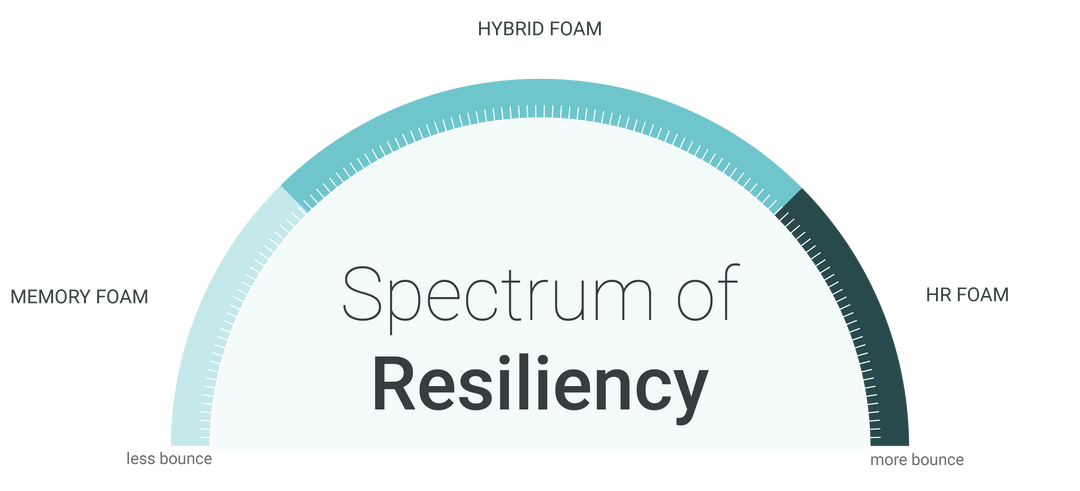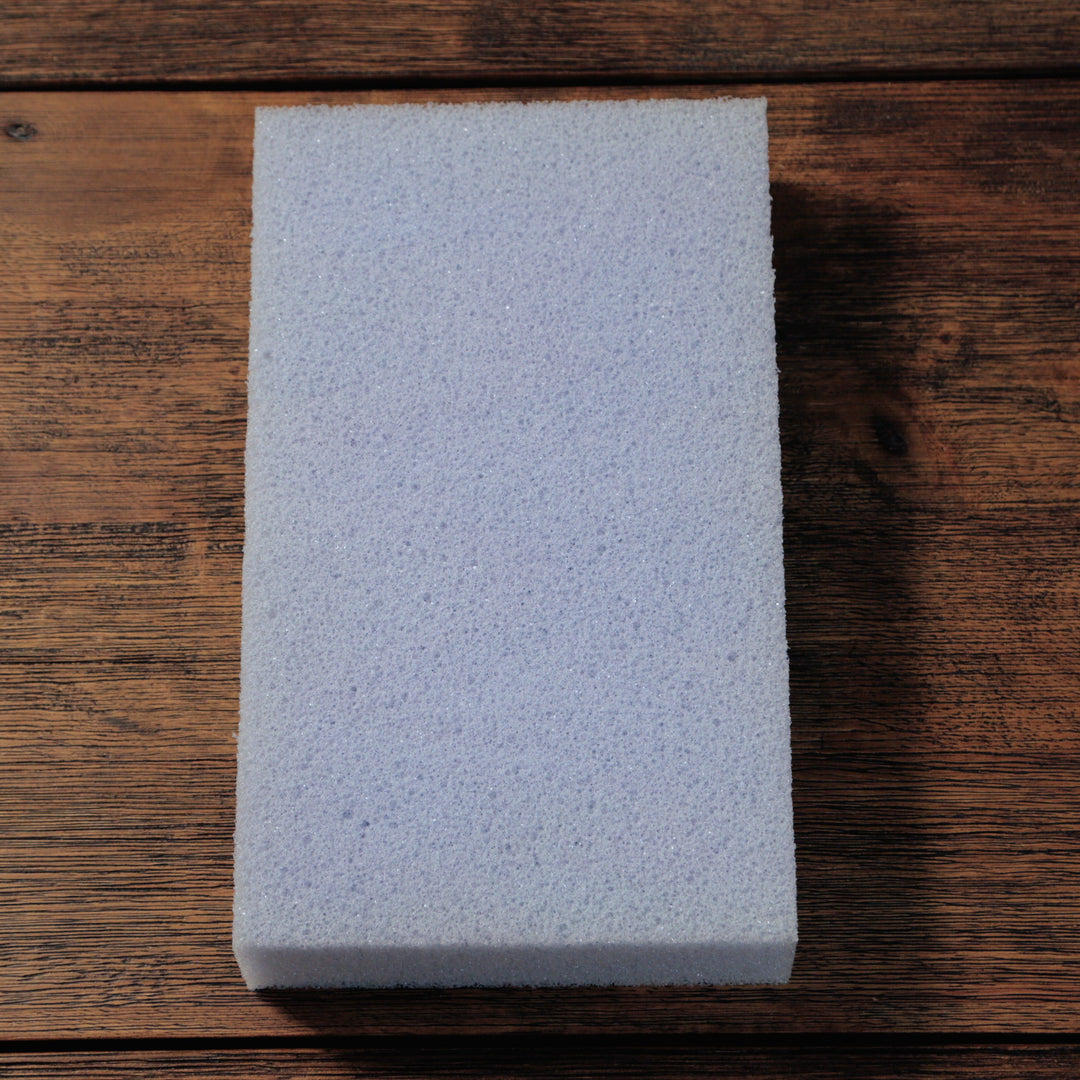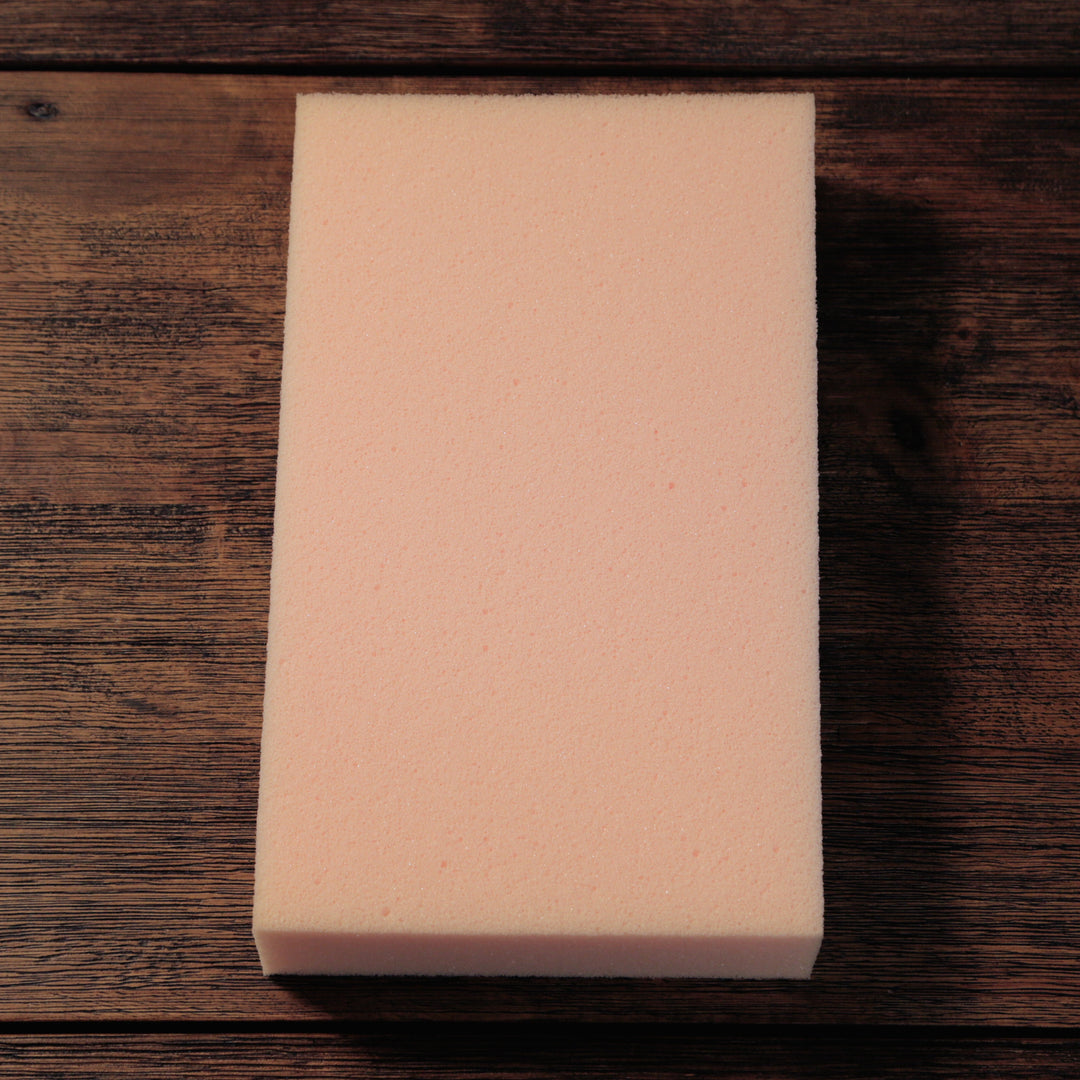Pressure Relief Made Easy
Spectrum of resilience
Foam exists on a spectrum. There is an inestimably large number of foam types that could be used to create a multitude of truly unique mattresses. However, for our purposes, we think the majority can be broken down into three main categories.

Memory Foam
Memory foam has low resiliency and is famous for its soft, slow recovery and it's body-contouring, pressure relief. Looking for more motion isolation? This is often the first step. (If you’re imagining someone jumping on a bed with a wine glass, you’re on the right track). It does a really good job of cradling pressure points — especially on the hips and shoulders. For this reason it is particularly popular with side sleepers. That said, while it can be ideal for side-sleepers — or anyone seeking pressure relief— preference plays a large part in its application.
Some people love it, swear by it, would never sleep on anything else. Others dislike the “sunken-in” feeling that the first camp prefers. As always, it’s ultimately a matter of taste.
Want to find the mattress that fits jus right? Take our comfort test to design your own custom mattress.
Learn about other foam types
Hybrid Foam
Better bounce and resiliency than memory foam and more pressure relief than H.R. options, means hybrid foams are designed to be a happy medium.
High Resilience Foam
At the far end of the resiliency spectrum lies the bounciest foam of them of all: latex-like, high-resiliency (HR) foam.
Conventional Foam
Conventional foam is usually what you'll find in the base of a mattress. It's not necessarily going to have a lot of fancy bells and whistles, it's meant to add structure




